What is a boom microphone and how do you use one?
What is a boom microphone, and moreover, how do you hold one? And just what is it used for? Let’s dig into all that juicy info today.
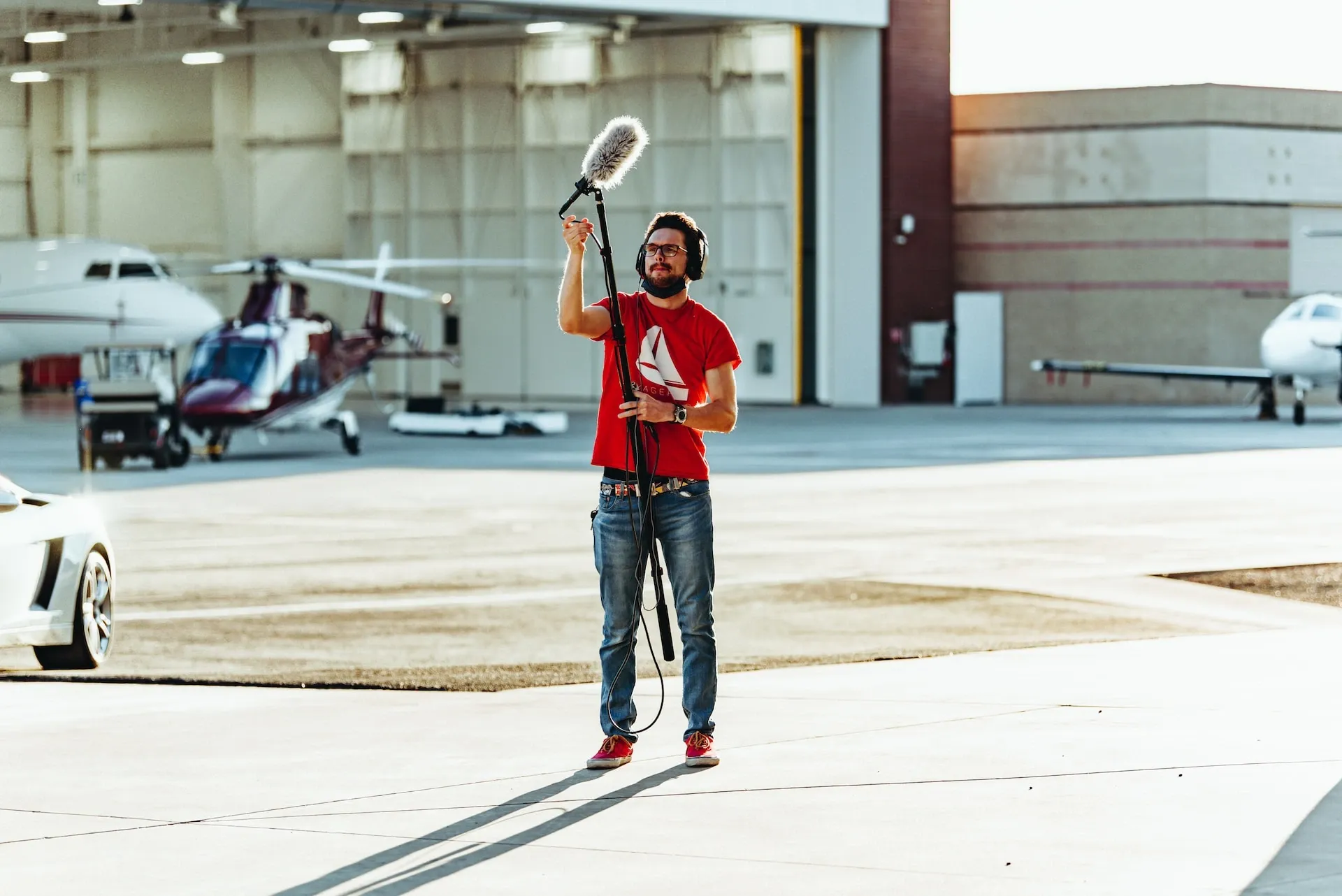
If you’re working on pro-level content with a crew, you’ll probably come across boom microphones. Figure out what you need to know below.
What is a boom microphone?
A boom microphone – often just called a ‘boom mic’ – is a microphone which is placed over your subjects during a shoot, picking up the audio like a regular, handheld mic would. Using a boom mic means your subjects can act ‘naturally’ without holding a mic.
The boom mic is connected to a boom pole – sometimes called a ‘fishpole’ – which is often adjustable and controlled by a boom operator. The operator moves the pole during a shoot to ensure the boom mic remains out of frame, but still within range to pick up the audio.
Boom mic vs shotgun mic: What’s the difference?
‘Boom mic’ is a general term for any microphone attached to a boom pole, but more often than not, you’ll find that they’re classed as ‘high directionality’ models.
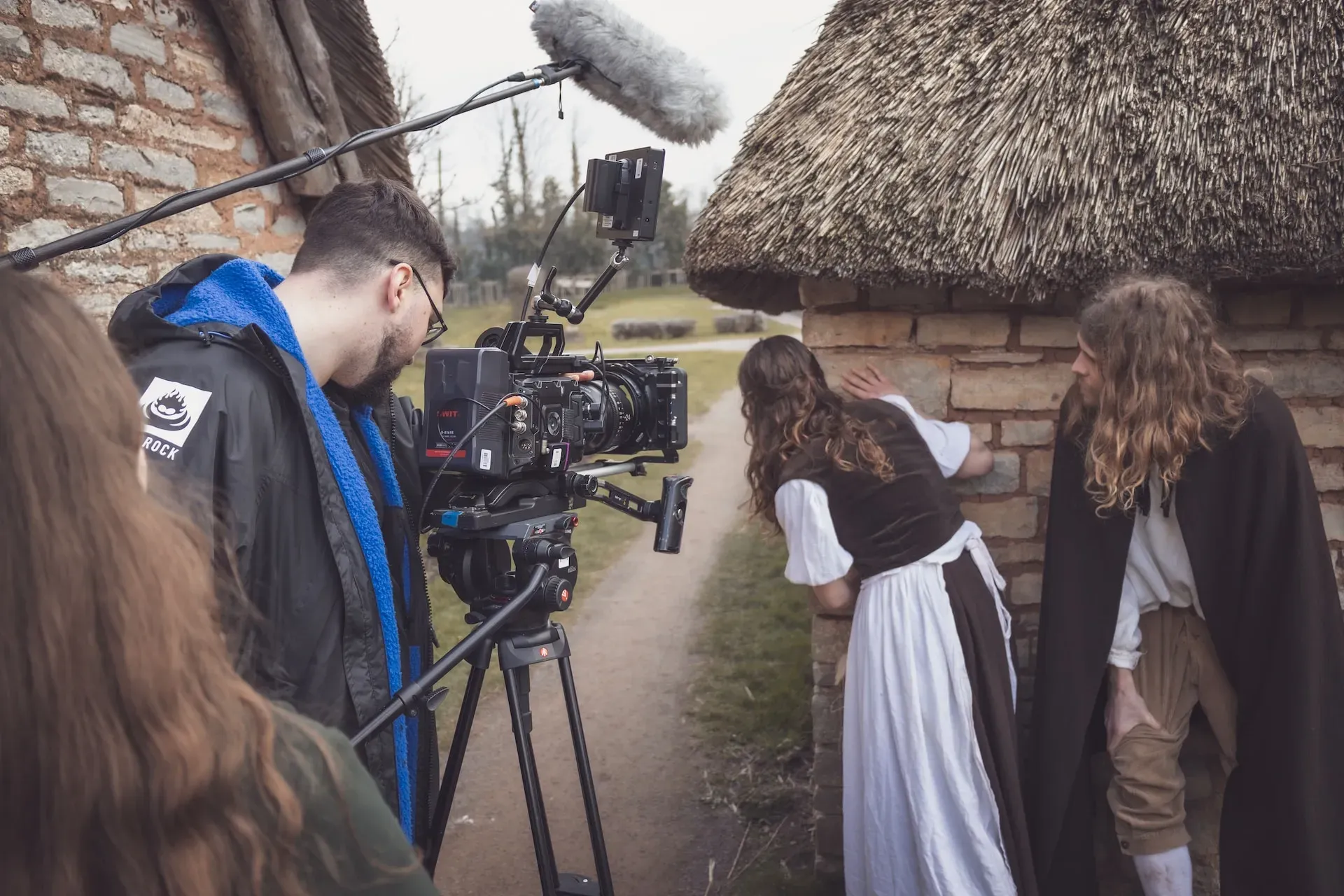
Without getting technical, this means that it ‘points’ to a specific area at the front when recording, rejecting noises from the sides – more so than your typical cardioid or supercardioid mic.
For this reason, shotgun microphones are popular choices for boom mics. There is no real ‘boom mic vs shotgun mic’ debate, as they’re often the same thing.
What is a boom mic used for?
A boom microphone’s high directionality makes it the perfect setup for capturing dialogue in controlled environments, like interviews and movie shoots.
Sometimes, boom mics are used as studio or theater overheads. Booms are ideal for capturing tricky sounds like drums, for which recording directly into a digital audio workstation (DAW) can be tricky. Their use in theater means actors can be heard throughout the whole auditorium without having to over-project their voices, or risk people at the back not being able to hear.
Speaking of, you know what else is important that people hear? The music in your content. Find the perfect track every time with our massive catalog.

How do you use a boom mic?
Using a boom mic is pretty simple, but that doesn’t mean you should take it for granted. Let’s go through the basics.
Use a sturdy boom pole
A well-made, professional boom pole will keep your mic stable and reduce any friction or bumps caused by movement. A variety of reputable brands make their own models, but for reliability and name recognition, we’d recommend something by Røde. Beyond just the boom poles, they offer clips and pivot adapters, which will make your boom mic easier to maneuver.
How to hold your boom mic correctly
- Keep the pole close to your body, so you can better support the weight. Hold your arms above your head, straight up.
- Lock your front arm to support the main weight of the boom, positioning your hand as close to the middle of the pole as possible. This will give you a better sense of balance, and will help you pivot the boom without too much hassle.
- Use your back arm to steer and angle the boom. Keep a firm grip, but don’t hang on too tightly – you don't want to tire yourself out or cause any unwanted friction if you slip.
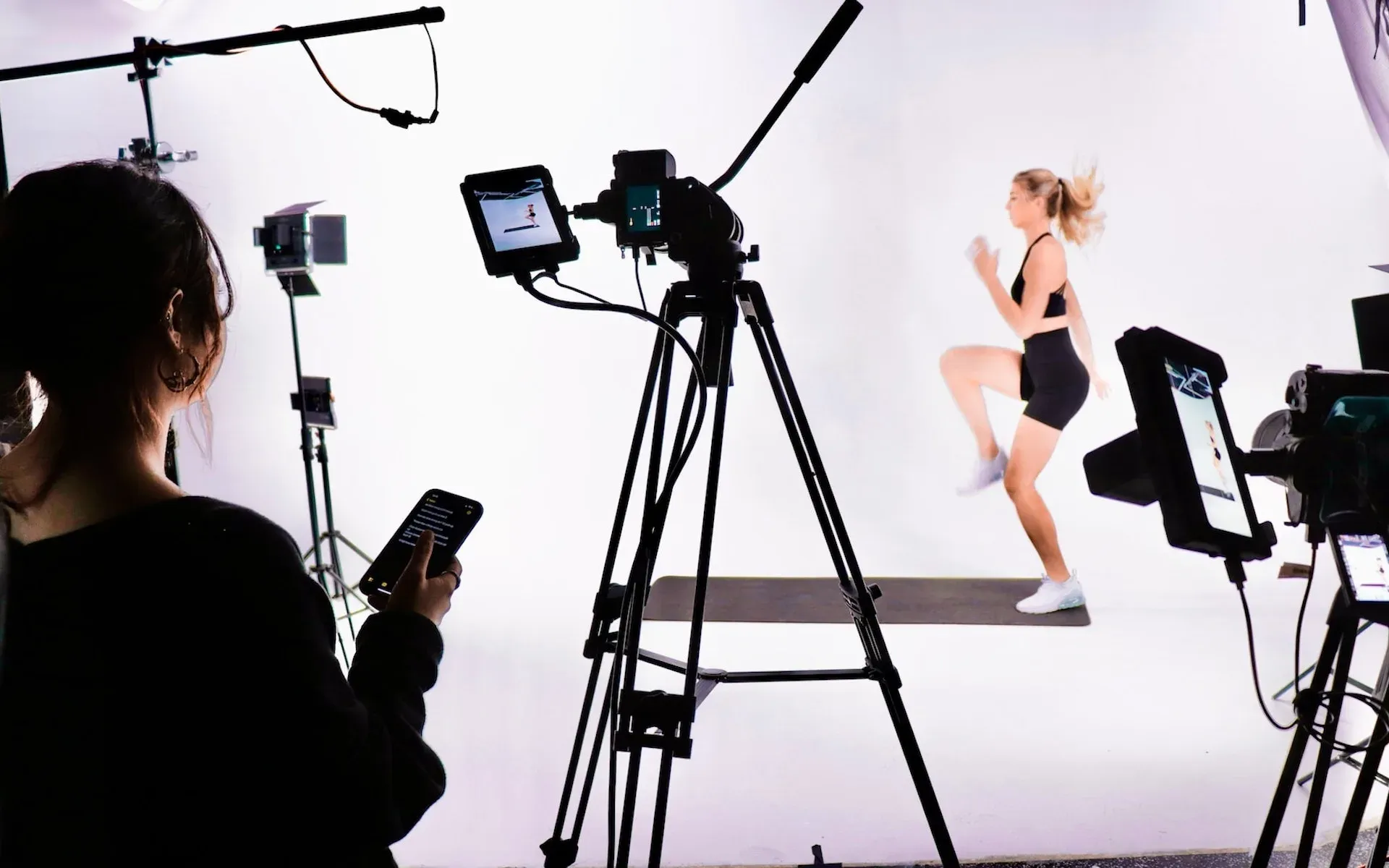
Naturally, how you hold the boom mic depends on what you’re shooting. For example, it might sometimes be easier to support the pole with your shoulders. Experiment with how holding the boom works for your shot and your body, taking care not to overexert yourself and damage your muscles.
And remember: the boom should be held above the action, not to the side. Otherwise, it will struggle to pick up the sound.
Keep the boom mic out of the shot
You might have seen a little, fluffy boom mic creep into the top of a news broadcast or TV soap once or twice – it’s an easy mistake to make! Shoot some test footage before the real deal, so you – or the person operating the boom – know exactly how far to extend the mic without dangling it in-frame.
Distance is a tricky balance, though, as you’ll still want the boom mic to be as close to the subjects as possible. If it’s too far away, the dialogue might end up being quieter than usual, or you might capture some ambient noise between the mic and the subject.
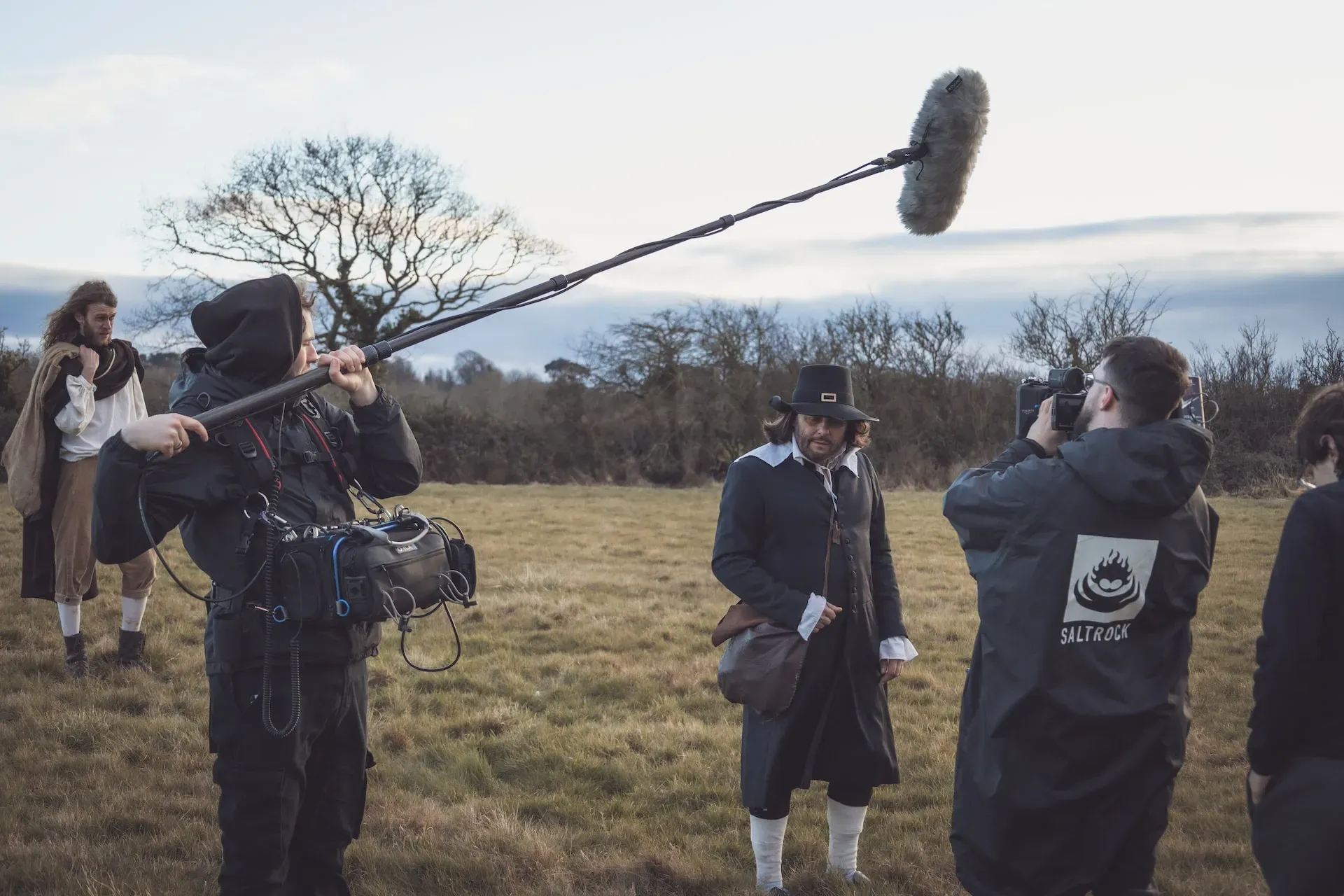
Make sure the cable connecting your boom mic to your DAW is tidily wrapped around the pole, too, so it doesn’t slip into your shot. You can avoid this problem by purchasing a cabled boom pole, which runs an XLR cable through the pole. All you have to do is plug the mic into one end and run an external cable to the bottom.
Remember backups
If your boom mic is battery-powered, take a charger and spare battery with you. Likewise, think about other things that might go wrong during the shoot. If your boom pole breaks, can you use something else?
If your microphone breaks – please please please, no! – do you have a suitable replacement ready to rock? The number and quality of your spares and alternatives will naturally depend on your budget, but it’s always worth bearing in mind.
Think about your crew
If you’re not using the boom yourself, think about your boom operator’s needs. If your shoot features two people at a table, you should be good to go with a solo boom operator.
However, if you’re filming complex action scenes that go here, there, and everywhere, your boom operator might require an assistant to help them guide the mic. Sure, you can add non-diegetic sounds in post-production to give it some extra intensity, but the boom mic still needs to pick up the dialogue and natural audio.
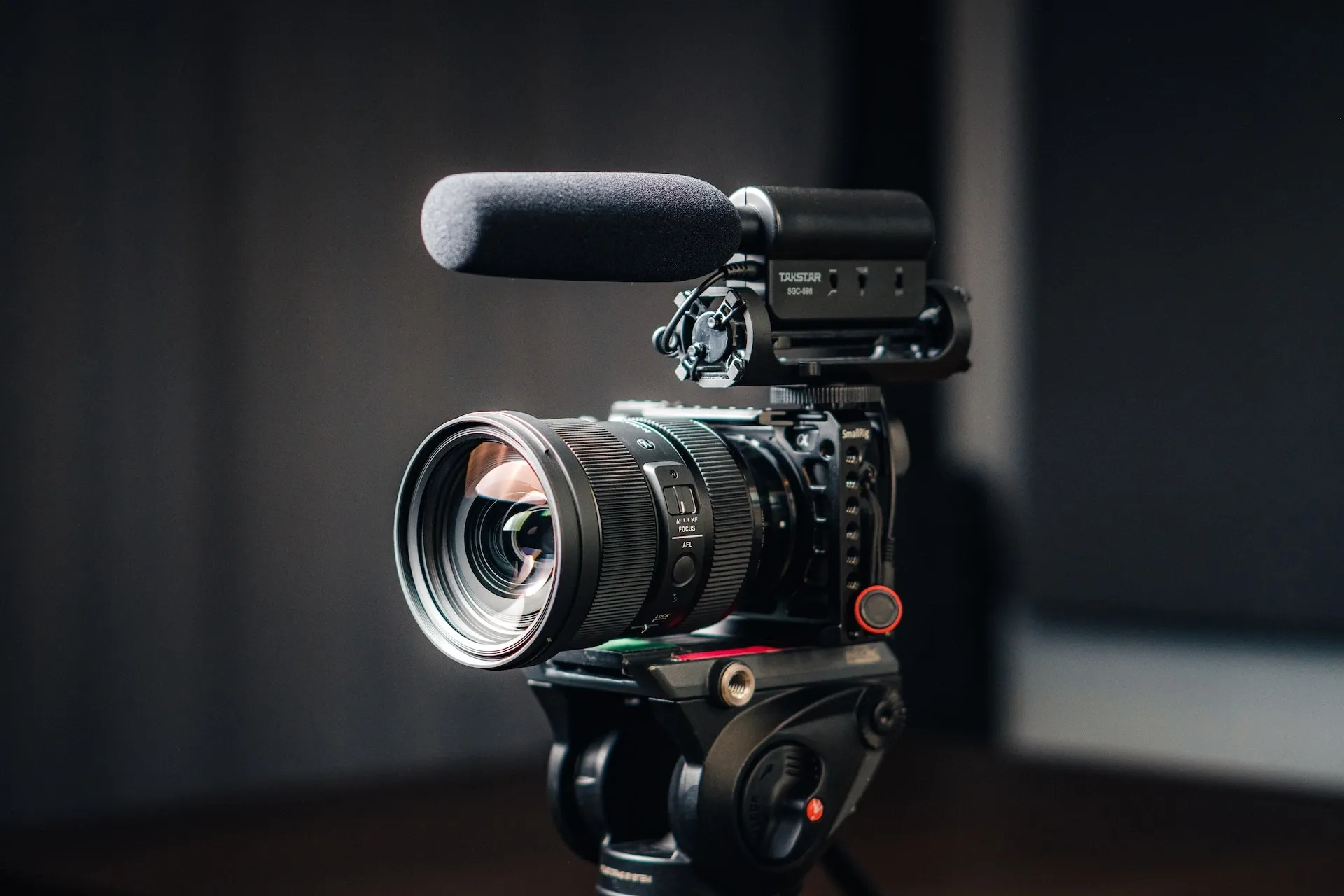
Listen to your boom operator and be realistic
A professional boom operator knows their stuff. If they think the boom mic should be placed somewhere specific, listen to them. If they think you should use some extra mics – like discreet lavalier microphones – to cover areas the boom might not reach, take the feedback on board. You don’t have to agree on anything, but they have the job for a reason – they know their stuff!
Which are the best boom mics?
As we covered up-top, shotgun mics are often used as boom mics due to their high directionality. Let’s wrap up this article with a couple of boom mics we’d recommend.
- Røde NTG-2: Røde’s ‘budget’-end shotgun model comes in under $300 – for that price, it’s surprisingly versatile. This puppy runs via phantom power or AA batteries, packs a high-pass filter, and is super lightweight.
- Sennheiser MKH 416-P48U3: OK, it’s $999, but you get an appropriate amount of bang for all that buck. This shotgun mic offers broadcast-level quality, next-to-zero self-noise, feedback rejection, and a bucket-load more. It also looks gorgeous, which is a nice extra.
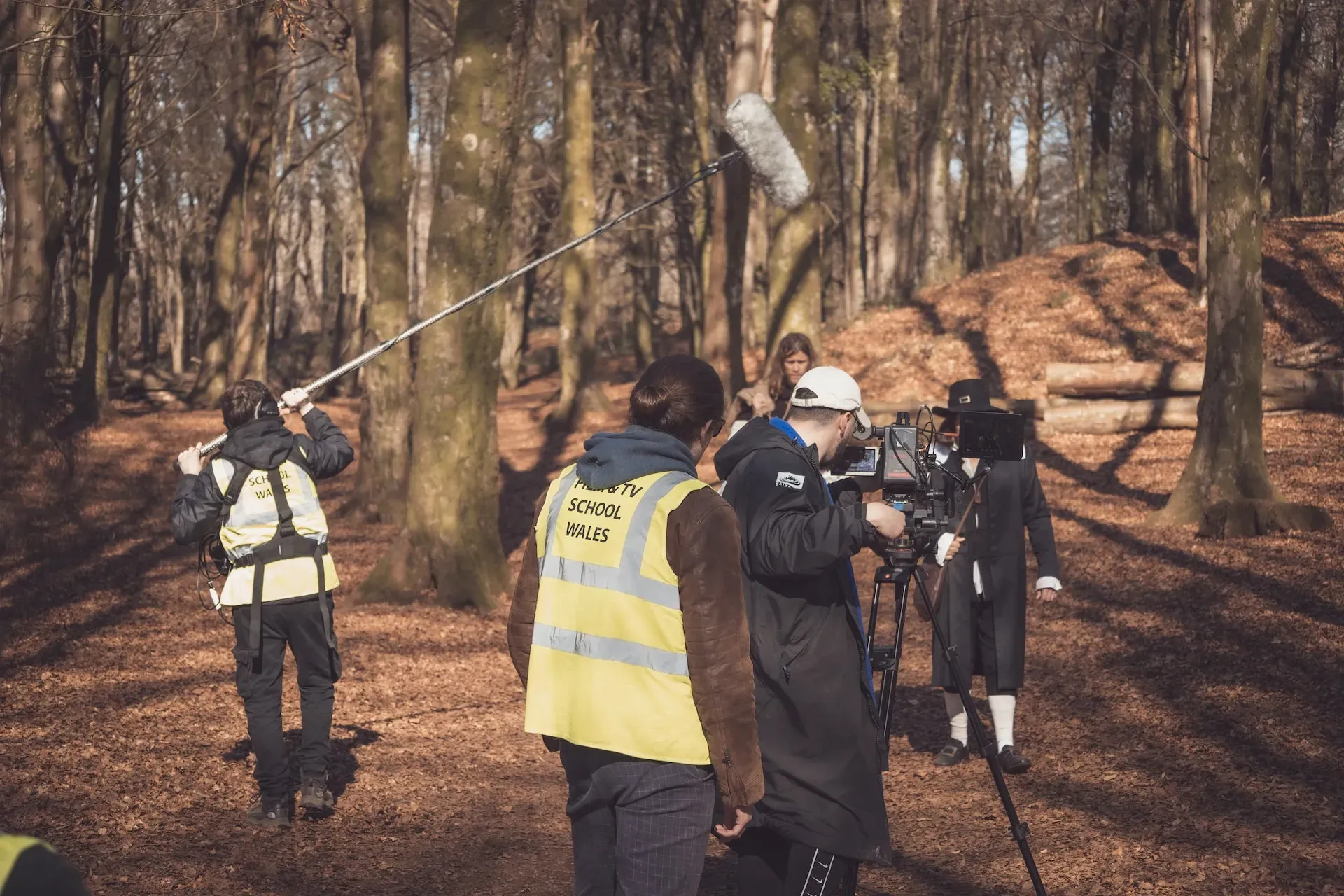
So, now you know what a boom mic is, what it does, and how to use one, what’s stopping you? Start experimenting and get your hands dirty. And, if you need some top-drawer music to complement your superbly captured dialogue and footage, look no further than Epidemic Sound’s extensive catalog.
Our catalog is high-quality, affordable, and safe. An Epidemic Sound subscription goes beyond royalty-free music, removing the headache of licensing and freeing you up to do what you do best. You can enjoy the safety of our license hand-in-hand with our massive catalog of 40,000 tracks, covering just about every genre you can think of. You’ll also gain unlimited access to our advanced search functions — finding the right sound’s never been easier.
It’s better than royalty-free. It’s worry-free. Get started with Epidemic Sound below.

Are you a filmmaker wanting to go pro? We've got you covered with background music for videos, including:
Take your video editing to the next level with our massive catalog of music for filmmakers.

